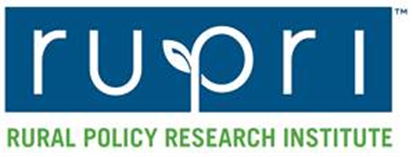Reps. Vern Buchanan (FL) and David Schweikert (AZ) will continue to chair the Ways & Means health and oversight subcommittees, respectively. Buchanan brings with him expertise on CMS coverage issues and a pledge to push the incoming administration’s goals to cut regulations and offer alternative coverage options. Schweikert advocates for telehealth and artificial intelligence.
Latest Reports Released on Pennsylvania Hospital Utilization Rates!

The Pennsylvania Health Care Cost Containment Council (PHC4) publicly released new County-Level Utilization and Condition-Specific Reports today, giving stakeholders in Pennsylvania valuable insight into ambulatory/outpatient usage and hospitalization rates of high interest conditions, using the most recent data available.
County-Level Utilization Reports are updated every quarter and show the overall total number of inpatient hospitalizations and ambulatory/outpatient cases for Pennsylvania residents. These results are displayed by patient age, sex, and payer. The newly released County-Level Utilization Reports reflect data from Q2 of 2024.
PHC4’s County-Level Condition-Specific Reports focus on several high interest conditions displaying county-specific rates of hospitalization for Pennsylvania residents. This information reflects data from the state fiscal year 2024, which is July 1, 2023, through June 30, 2024. The analysis within the County-Level Condition-Specific Reports is limited to Pennsylvania general acute care hospitals.
“This succinct series of reports sheds light on critical health care components at a county-level. This type of reporting is one of many ways PHC4 proudly supports Pennsylvania communities.” said Barry D. Buckingham, PHC4’s Executive Director. Buckingham went on to say that PHC4’s goals include providing fact-based reporting in support of those charged with prioritizing health care resources effectively. The organization believes this is in direct support of the newly established mission of empowering Pennsylvanians through transparent reporting.
PHC4 is an independent council formed under Pennsylvania statute (Act 89 of 1986, as amended by Act 15 of 2020) in order to address rapidly growing health care costs. PHC4 continues to produce comparative information about the most efficient and effective health care to individual consumers and group purchasers of health services. In addition, PHC4 produces information used to identify opportunities to contain costs and improve the quality of care delivered.
For more information, visit phc4.org or review the full report here.
Media contact:
Barry D. Buckingham, Executive Director, PHC4, bbuckingham@phc4.org
Request Free Oral Health Materials from Pennsylvania Oral Health Coalition

Oral health materials are available on the Request Materials page at no cost. Physical and online materials include oral health flyers, posters, rack cards, postcards, and magnets. Topics include general oral health, kids’ health, tobacco/nicotine, workforce, and fluoride.
These resources are great for patient education in waiting rooms, distribution at health fairs and other
community events, and much more.
New RUPRI Report: Evaluating Medicare Advantage Benchmark Setting Methodology on Rural Counties

Dan Shane PhD; Edmer Lazaro, DPT, MSHC; Fred Ullrich, BA; and Keith Mueller, PhD
This brief explores how the process for setting benchmark payments for Medicare Advantage plans may create different incentives across rural and urban counties.
Key Findings:
- Rural counties are less likely to rank in the lower Medicare Fee for Service (FFS) spending quartiles that receive a higher percentage of the county benchmark: 41 percent of rural counties are categorized in combined quartiles 1 and 2 versus 59 percent for urban counties.
- Global caps (maximum benchmark payments based on pre-Affordable Care Act (ACA) county FFS spending) on benchmark payments are much more likely in rural counties, particularly those in the lower-spending quartiles, reducing incentives for supplemental benefits or reduced cost sharing.
Additional products:
- Medicare Advantage Plan Growth in Rural America: Opportunities for Beneficiaries https://www.ruralhealthresearch.org/projects/1004
- Medicare Advantage Plan Growth in Rural America: Availability of Supplemental Benefits https://rupri.public-health.uiowa.edu/publications/policybriefs/2024/MA_Plan_Growth.pdf
Contact Information:
Keith J. Mueller, PhD; keith-mueller@uiowa.edu
Director, RUPRI Center for Rural Health Policy Analysis
University of Iowa College of Public Health
Office: 1.319.384.3832
Call for Presentations: 2025 Pennsylvania State Data User Conference
 The Pennsylvania State Data Center (PaSDC) invites presenters to participate in the 2025 Pennsylvania Data User Conference. This year’s event will be held on May 15, 2025, at Penn State Harrisburg in Middletown. The annual Data User Conference serves as Pennsylvania’s most comprehensive single-day forum for research and developments in demographic and socioeconomic data.
The Pennsylvania State Data Center (PaSDC) invites presenters to participate in the 2025 Pennsylvania Data User Conference. This year’s event will be held on May 15, 2025, at Penn State Harrisburg in Middletown. The annual Data User Conference serves as Pennsylvania’s most comprehensive single-day forum for research and developments in demographic and socioeconomic data.
The PaSDC Data User Conference aims to educate its audience on demographic and socioeconomic research and policies affecting Pennsylvania. Past presentations have focused on research themes (e.g., aging, prison populations, labor force, and rural Pennsylvania), community development (e.g., case studies and community planning), innovations in technology (e.g., database and data visualization software), and other data-related topics.
Sessions at the conference are non-commercial and vendor neutral. Under no circumstance should a session be a direct promotion of an organization’s product, service, or monetary self-interest. The emphasis should be on the application of demographic and socioeconomic data, technology, and other timely topics.
Submission Details
Proposals will be accepted for team, individual, or panel presentations. To propose a session, please email the topic and a brief description or outline (maximum 250 words) to Jennifer Shultz (jjb131@psu.edu) by Wednesday, February 26, 2025. The PaSDC will notify all selected speakers by March 7, 2025.
Presentation Rules
Presentation proposals will be reviewed by the conference planning committee and selections will be made based upon desired topics, flow, educational value, and understanding of the content. All selected presentations will be published in conference material and online.
Agenda Schedule
All presentations will be on May 15, 2025. Conference organizers will set the time for each presentation to optimize the sequencing and flow of content and tracks. Sessions will end by 5:00 PM.
Speaker Benefits
The PaSDC does not pay fees or travel expenses for speakers. All speakers receive complimentary conference registration, including meals, and are featured in the conference publication and on the conference website. These benefits apply only to speaker(s) and do not extend to support staff or colleagues who may accompany them.
Funding Announced! HRSA Rural Maternity and Obstetrics Management Strategies Program (Rural MOMS)
 The Rural Maternity and Obstetrics Management Strategies (Rural MOMS) Program from HRSA’s Federal Office of Rural Health Policy (FORHP), is open and accepting applications for the program’s 4-year period of performance (September 30, 2025 – September 29, 2029). HRSA award up to 3 cooperative agreements for up to $1,000,000 per year, to provide support to establish innovative, collaborative rural obstetric networks to improve maternity care and access to care in rural communities. Applications are due on April 22, 2025.
The Rural Maternity and Obstetrics Management Strategies (Rural MOMS) Program from HRSA’s Federal Office of Rural Health Policy (FORHP), is open and accepting applications for the program’s 4-year period of performance (September 30, 2025 – September 29, 2029). HRSA award up to 3 cooperative agreements for up to $1,000,000 per year, to provide support to establish innovative, collaborative rural obstetric networks to improve maternity care and access to care in rural communities. Applications are due on April 22, 2025.
Rural MOMS funds networks that establish or continue collaborative improvement and innovative models that can provide long-term sustainable and financially viable service delivery to improve maternal and infant health outcomes. The work of these networks supports the goal of the program to improve maternal and infant health outcomes and access to and delivery of maternity and obstetrics care in rural areas and reduce preventable maternal mortality risks and decrease severe maternal morbidity in rural areas.
Eligible applicants include all domestic public or private, non-profit, or for-profit entity providing prenatal care, labor care, birthing, and postpartum care services in rural areas, frontier areas, or medically underserved areas, or to medically underserved populations or Indian Tribes or Tribal organizations.
A technical assistance webinar via Zoom is scheduled for applicants on Wednesday, February 12, 2025, at 2:00 pm Eastern. If you are unable able to join the webinar, a recording will be made available later.
Examples of previously funded projects under this program are available at this link. Applicants may also benefit from the availability of Evidence-Based Toolkits for Rural Community Health which are informed by previous program investments by the Federal Office of Rural Health Policy and the Rural Health Information Hub.
For more information about this funding opportunity, contact RMOMS@hrsa.gov
Helpful links:
- Notice of Funding Opportunity on Grants.gov
- Rural Maternity and Obstetrics Management Strategies (RMOMS) Program | HRSA
- Profiles of current and past Rural MOMS awardees:
- RMOMS Awardee Directory – FY 2021 Cohort (PDF – 1 MB)
- RMOMS Awardee Directory – FY 2022 Cohort (PDF – 1 MB)
USDA Rural Development Names Acting State Director in Pennsylvania

With the changing of Presidential Administrations on Jan. 20, 2025, USDA Rural Development (RD) announced that our very own Jeremy Wilson will serve as the Acting State Director for the organization.
Wilson, 48, is a native of Tunkhannock, Pa., where he graduated high school in the Class of 1994.
“I am honored to serve as Pennsylvania’s Acting State Director again,” Wilson said. “I am thrilled to support our dedicated employees to fulfill our agency mission.”
Wilson was serving as the Deputy State Director for the department prior to the appointment.
Wilson has 27 years of experience with USDA Rural Development, including over 15 years in originating and servicing rural loan and grant programs, and the last 12 years in administration. Jeremy has worked in multiple field offices, administered multiple rural development programs, and has experience at the national level from agency details, task forces, and special projects.
Wilson earned his Bachelor of Arts Degree from Lebanon Valley College in 1998 and his Masters Degree in Public Administration from Shippensburg University in 2003. In addition, he is also a graduate, and current advisory board member, of the Pennsylvania Rural/Urban Leadership Program (RULE), which is a two-year intensive leadership course administered through the Pennsylvania State University.
How a Company Makes Millions Off 340B
A private business, Apexus, has helped supercharge the controversial federal drug program, 340B. Patients and insurers have been left with big bills. The intention behind the program was for a small number of safety-net providers to have access to affordable drugs and be able to expand their care for needy patients. But instead, the program has exploded: Now, more than half of nonprofit hospitals in the United States take part. While some providers say it has helped keep their doors open, others — especially large nonprofit health systems — have been accused of maximizing payouts and swallowing the profits. Source: New York Times
Threats to Medicaid Are Not New
Recent attacks on Medicaid have proposed a per capita cap on federal funding and potentially instituting block grants. While these are not new proposals, this would dramatically change federal and state Medicaid structures by shifting the cost and the risk directly to states. With more and more consumers relying on Medicaid, changes and cuts could leave millions without coverage nationally. Some states have begun the groundwork to reinstate work requirements. In 2019, the Centers for Medicare and Medicaid Services approved 13 Medicaid demonstration projects centered around work requirements as a condition of Medicaid eligibility. Previous research indicated that among enrollees who aren’t already working, nearly all have disabilities, serious health conditions, childcare or caretaking responsibilities, or are in school.
ACA Preventive Care Under Fire…. Again
The US Supreme Court has agreed to hear arguments to consider whether the Affordable Care Act’s preventive care coverage should be reinstated after a lower court struck it down. If the court rules in favor of the Texas employers who filed the case, tens of millions of people who get their health insurance from their employer or through the ACA marketplace would be impacted by the removal of these services, which require insurers to cover the full cost of everything from birth control to vaccines to mental health screenings. Since the enactment of the ACA in 2010, more than 2,000 legal challenges have been filed in state and federal courts contesting all or part of the law. While the law remains popular and enrollment in the Health Insurance Marketplaces through the ACA has soared to more than 23 million people, challenges jeopardize the law and its effectiveness.
